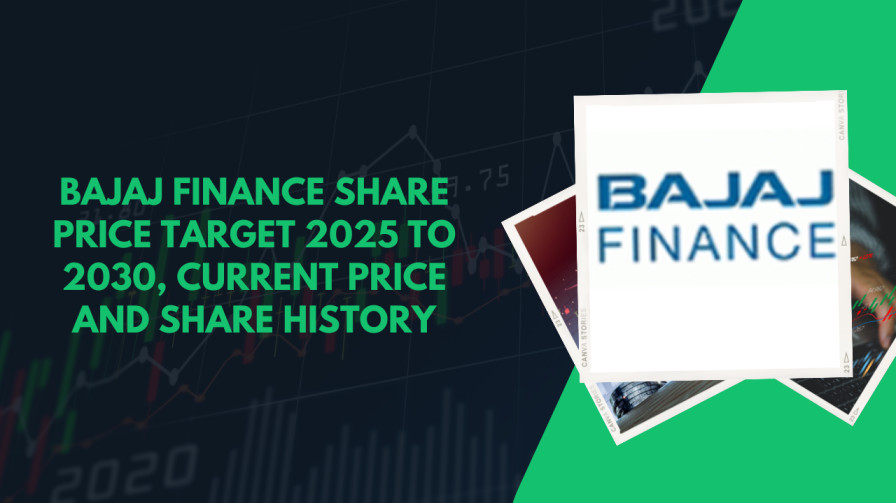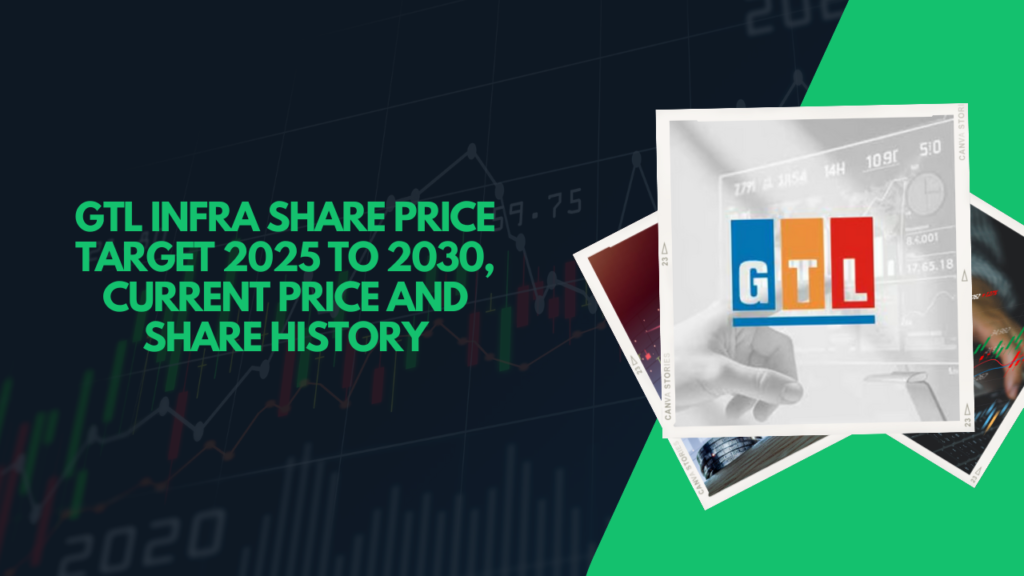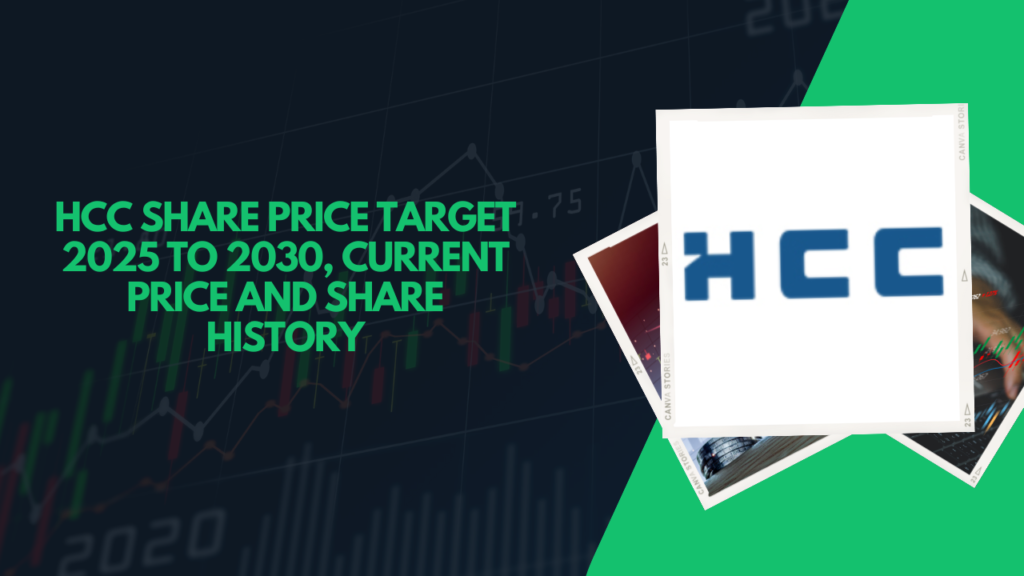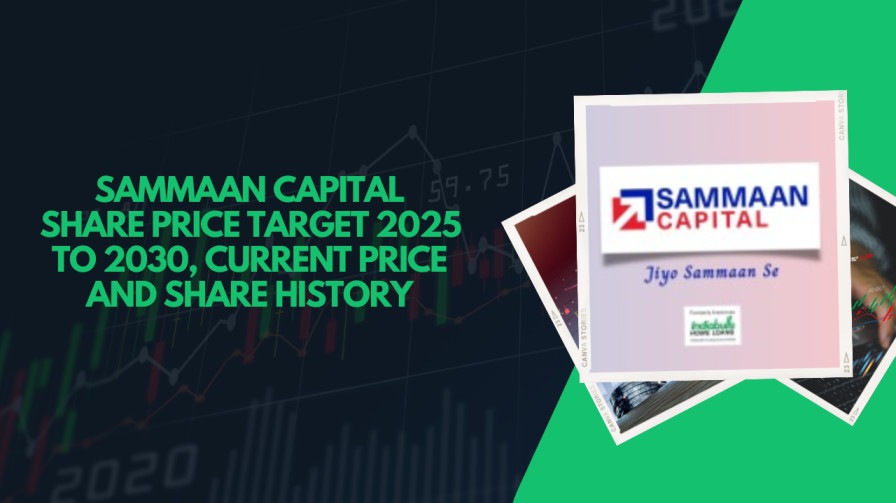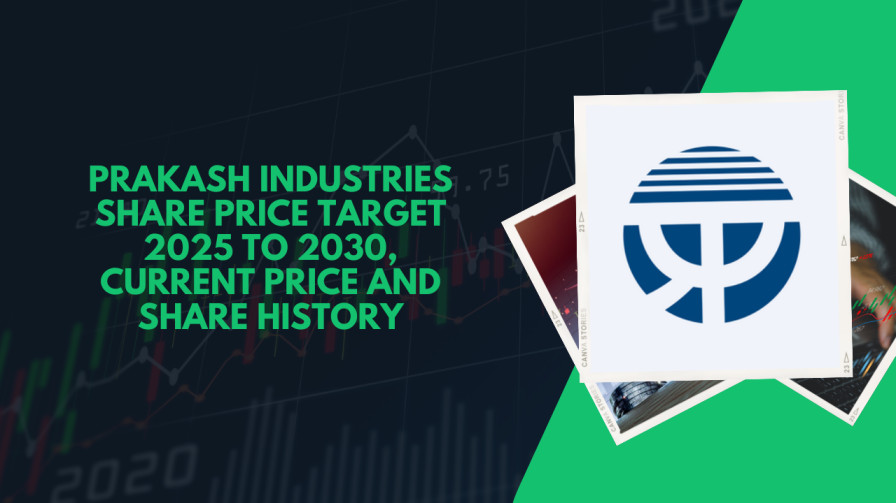Bajaj Finance Share Price Target 2025 to 2030, Current Price and Share History: This article provides an in-depth analysis of Bajaj Finance’s share target from 2025 to 2030, focusing on its current market performance, share history, financial trends, shareholding pattern, and competitive positioning. Bajaj Finance, one of India’s leading non-banking financial companies (NBFCs), is known for its diversified portfolio, innovative financial products, and strong presence in retail, SME, and commercial lending segments.
Overview of Bajaj Finance Limited
What is Bajaj Finance Limited?
Bajaj Finance Limited is a leading non-banking financial company (NBFC) in India, headquartered in Pune. It specializes in a wide range of financial services, including consumer finance, SME lending, commercial lending, and wealth management. Established on March 25, 1987, by Rahul Bajaj, the company has grown to become a trusted name in India’s financial sector, with a strong customer base and a significant market presence. Bajaj Finance operates under the parent organization Bajaj Finserv, focusing on innovation, customer-centricity, and operational efficiency.
Key Features of Bajaj Finance Limited
- Market Position: Bajaj Finance is a prominent player in the Indian NBFC sector, known for its diversified financial offerings and customer-oriented approach. Its assets under management (AUM) reached ₹354,192 crore as of June 2024, reflecting robust growth.
- Customer Base: The company boasts an extensive customer base of 88.11 million, showcasing its reach and impact across various segments.
- Revenue Performance: Bajaj Finance reported revenue of ₹54,982 crore (US$6.9 billion) in 2024, emphasizing its strong financial performance and growth trajectory.
- Stock Exchange Listings: The company is listed on both BSE (500034) and NSE (BAJFINANCE), ensuring transparency and accessibility for investors.
- Strategic Vision: Focused on leveraging digital technologies and expanding its portfolio to meet evolving customer needs, Bajaj Finance aims to solidify its leadership in the financial services industry.
Information about Bajaj Finance Limited
| Information | Details |
|---|---|
| Website | bajajfinserv.in/finance |
| Headquarters | Pune, India |
| Founded | March 25, 1987 |
| Founder | Rahul Bajaj |
| CEO | Rajeev Jain (since 2007) |
| Number of Employees | 53,782 (2024) |
| Parent Organization | Bajaj Finserv |
| Revenue | ₹54,982 crore (2024) |
| Stock Exchange Listings | BSE: 500034, NSE: BAJFINANCE |
Current Market Overview of Bajaj Finance Limited Share Price
Bajaj Finance Limited Share Price History

Bajaj Finance Limited Share Fundamental Data
- Market Cap: ₹4,27,528 Cr.
- Current Price: ₹6,908
- High / Low: ₹7,830 / ₹6,188
- Stock P/E: 27.8
- Book Value: ₹1,402
- Dividend Yield: 0.52%
- ROCE: 11.9%
- ROE: 22.1%
- Face Value: ₹2.00
Market Position of Bajaj Finance Limited Share as of December 2024
| Time Period | Returns of Bajaj Finance Share |
|---|---|
| 1 Day | 1.35% |
| 1 Week | 0.87% |
| 1 Month | 3.02% |
| 3 Months | -10.94% |
| 1 Year | -4.49% |
| 3 Years | 0.25% |
| 5 Years | 62.43% |
Bajaj Finance Share Price History from 1995 to 2024
| Year | Bajaj Finance Share Price | YOY Chg% |
|---|---|---|
| 2024 | ₹6,908 | -5.7% |
| 2023 | ₹7,328 | 11.4% |
| 2022 | ₹6,575 | -5.8% |
| 2021 | ₹6,977 | 31.8% |
| 2020 | ₹5,295 | 25.0% |
| 2019 | ₹4,235 | 60.1% |
| 2018 | ₹2,645 | 50.6% |
| 2017 | ₹1,757 | 108.6% |
| 2016 | ₹842 | 40.1% |
| 2015 | ₹601 | 72.5% |
| 2014 | ₹348 | 120.3% |
| 2013 | ₹158 | 20.4% |
| 2012 | ₹131 | 123.1% |
| 2011 | ₹59 | -13.9% |
| 2010 | ₹68 | 113.2% |
| 2009 | ₹32 | 415.4% |
| 2008 | ₹6 | -85.4% |
| 2007 | ₹43 | 20.0% |
| 2006 | ₹36 | -9.3% |
| 2005 | ₹39 | 241.9% |
| 2004 | ₹11 | 38.4% |
| 2003 | ₹8 | 94.1% |
| 2002 | ₹4 | 45.7% |
| 2001 | ₹3 | 14.0% |
| 2000 | ₹3 | -39.1% |
| 1999 | ₹4 | 42.1% |
| 1998 | ₹3 | -2.3% |
| 1997 | ₹3 | -22.3% |
| 1996 | ₹4 | -48.2% |
| 1995 | ₹8 | – |
Bajaj Finance Share Price Target for 2024, 2025, 2026, 2027, 2028, 2029, 2030
Bajaj Finance Share Price Target in 2024
In 2024, the share price target for Bajaj Finance is expected to range between ₹6,500 and ₹6,700, reflecting minor adjustments influenced by market dynamics.
| Year | Minimum Target | Maximum Target |
|---|---|---|
| 2024 | ₹6,500 | ₹6,700 |
Bajaj Finance Share Price Target in 2025
For 2025, the share price target is projected to range between ₹6,800 and ₹7,400, supported by improved market sentiment and growth initiatives.
| Year | Minimum Target | Maximum Target |
|---|---|---|
| 2025 | ₹6,800 | ₹7,400 |
Bajaj Finance Share Price Target in 2026
In 2026, the share price target for Bajaj Finance is expected to range between ₹6,950 and ₹7,050, indicating steady but moderate growth.
| Year | Minimum Target | Maximum Target |
|---|---|---|
| 2026 | ₹6,950 | ₹7,050 |
Bajaj Finance Share Price Target in 2027
By 2027, the share price target for Bajaj Finance is estimated to range between ₹7,000 and ₹7,350, driven by stable market conditions and consistent performance.
| Year | Minimum Target | Maximum Target |
|---|---|---|
| 2027 | ₹7,000 | ₹7,350 |
Bajaj Finance Share Price Target in 2028
In 2028, the share price target is anticipated to range between ₹6,150 and ₹7,300, reflecting potential fluctuations due to market challenges.
| Year | Minimum Target | Maximum Target |
|---|---|---|
| 2028 | ₹6,150 | ₹7,300 |
Bajaj Finance Share Price Target in 2029
For 2029, the share price target is projected to range between ₹6,300 and ₹7,200, supported by gradual market recovery and strategic developments.
| Year | Minimum Target | Maximum Target |
|---|---|---|
| 2029 | ₹6,300 | ₹7,200 |
Bajaj Finance Share Price Target in 2030
By 2030, the share price target for Bajaj Finance is expected to range between ₹6,550 and ₹7,150, driven by long-term stability and sustained growth initiatives.
| Year | Minimum Target | Maximum Target |
|---|---|---|
| 2030 | ₹6,550 | ₹7,150 |
Financial Health and Performance Analysis (FY 2020 – FY 2024)
Total Revenue (FY 2020 – FY 2024)
| Year | Total Revenue (₹ Cr) | Total Revenue Growth (%) |
|---|---|---|
| FY 2024 | ₹54,982.51 | 32.79% |
| FY 2023 | ₹41,405.69 | 30.86% |
| FY 2022 | ₹31,640.41 | 18.58% |
| FY 2021 | ₹26,683.05 | 1.13% |
| FY 2020 | ₹26,385.64 | 42.62% |
Total Assets (FY 2020 – FY 2024)
| Year | Total Assets (₹ Cr) | Total Assets Growth (%) |
|---|---|---|
| FY 2024 | ₹3,75,741.62 | 36.52% |
| FY 2023 | ₹2,75,228.67 | 29.52% |
| FY 2022 | ₹2,12,505.36 | 23.89% |
| FY 2021 | ₹1,71,526.87 | 4.34% |
| FY 2020 | ₹1,64,391.13 | 32.33% |
Net Cash Flow (FY 2020 – FY 2024)
| Year | Net Cash Flow (₹ Cr) |
|---|---|
| FY 2024 | ₹2,483.76 |
| FY 2023 | ₹-1,830.69 |
| FY 2022 | ₹1,557.84 |
| FY 2021 | ₹516.65 |
| FY 2020 | ₹997.50 |
Key Ratios (FY 2020 – FY 2024)
| Year | Return on Equity (ROE) (%) | Return on Capital Employed (ROCE) (%) | Return on Assets (ROA) (%) |
|---|---|---|---|
| FY 2024 | 18.84% | 14.65% | 3.84% |
| FY 2023 | 21.16% | 14.76% | 4.18% |
| FY 2022 | 16.07% | 12.39% | 3.30% |
| FY 2021 | 11.97% | 12.63% | 2.57% |
| FY 2020 | 16.28% | 15.55% | 3.20% |
Analysis Summary
- Total Revenue Growth:
The company demonstrated a consistent increase in total revenue, with significant growth of 32.79% in FY 2024, following 30.86% in FY 2023 and 18.58% in FY 2022. The revenue surge highlights strong market performance and successful strategic execution. - Total Assets Growth:
Total assets grew at an impressive rate of 36.52% in FY 2024, continuing the positive trend seen over the last five years. This reflects a robust expansion strategy and efficient asset utilization. - Net Cash Flow:
FY 2024 saw a notable recovery in net cash flow, reaching ₹2,483.76 Cr, reversing the negative trend in FY 2023. The company’s ability to generate positive cash flow in most years underscores its financial resilience. - Profitability Ratios:
- Return on Equity (ROE): Improved to 18.84% in FY 2024, indicating better shareholder returns compared to FY 2023.
- Return on Capital Employed (ROCE): Maintained stability, reflecting consistent efficiency in utilizing capital.
- Return on Assets (ROA): Slight decline to 3.84% in FY 2024, suggesting room for enhanced asset efficiency.
How to Buy Bajaj Finance Shares
- Choose a Broker: Select a reliable brokerage platform such as Zerodha, Upstox, Angel One, ICICI Direct, or HDFC Securities that offers access to Bajaj Finance shares.
- Open a Trading Account: Register for a Demat and trading account with your chosen broker. Popular platforms include Kite (Zerodha), Upstox Pro, and Angel Broking app.
- Complete KYC: Submit the necessary documents for Know Your Customer (KYC) verification, including proof of identity, address, and PAN card.
- Deposit Funds: Transfer the required funds into your trading account to enable the purchase of Bajaj Finance shares.
- Search for the Company Shares: Locate Bajaj Finance shares by searching for the company name or ticker symbol (BAJFINANCE) on the brokerage platform.
- Place an Order:
Choose the number of shares you want to buy and place a market order (for immediate execution at current prices) or a limit order (to set a specific buying price). - Confirm Purchase: Carefully review the order details and confirm the transaction to successfully purchase Bajaj Finance shares.
Bajaj Finance Share Price Target for the Next 5 Years
Bajaj Finance is expected to see steady growth in the coming years, with positive market conditions and strategic initiatives driving its performance. Below are the projected share price targets for the next five years:
| Year | Minimum Target (₹) | Maximum Target (₹) |
|---|---|---|
| 2024 | ₹6,500 | ₹6,700 |
| 2025 | ₹6,800 | ₹7,400 |
| 2026 | ₹6,950 | ₹7,050 |
| 2027 | ₹7,000 | ₹7,350 |
| 2028 | ₹6,150 | ₹7,300 |
Shareholding Pattern of Bajaj Finance
Promoters:
- No. of Shares: 33,85,72,545
- Percentage: 54.70%
- % Change QoQ: 0.00%
FII (Foreign Institutional Investors):
- No. of Shares: 10,97,50,634
- Percentage: 17.73%
- % Change QoQ: -0.03%
DII (Domestic Institutional Investors):
- No. of Shares: 9,28,67,322
- Percentage: 15.01%
- % Change QoQ: +0.78%
MF (Mutual Funds):
- No. of Shares: 5,87,77,272
- Percentage: 9.50%
- % Change QoQ: +0.34%
Others:
- No. of Shares: 7,78,05,819
- Percentage: 12.55%
- % Change QoQ: -0.75%
Pros and Cons of Bajaj Finance
Pros:
- Market Leader: Strong position in the NBFC sector with diverse financial products.
- Consistent Growth: Strong revenue and loan disbursements growth.
- High Profitability: Solid return on equity (ROE) and return on capital employed (ROCE).
- Good Credit Rating: Enables access to funds at competitive rates.
- Tech Integration: Effective use of technology for better customer service and scalability.
Cons:
- High Competition: Intense market rivalry may pressure margins.
- Credit Risk Exposure: Vulnerable to loan defaults in economic downturns.
- Regulatory Risks: Subject to changing RBI regulations that could impact growth.
- Market Sensitivity: Performance affected by economic factors and market volatility.
- Asset Quality Risk: Maintaining asset quality amidst growth can be challenging.
Peer Competitors of Bajaj Finance in the Finance & Investments Sector
| Name | Share Price (₹) | Market Cap (₹ Cr) |
|---|---|---|
| Bajaj Finance | 6907.75 | 427527.70 |
| Bajaj Finserv | 1579.30 | 252080.01 |
| Jio Financial | 304.95 | 193838.56 |
| Bajaj Holdings | 11300.90 | 125711.60 |
| Shriram Finance | 2898.90 | 108911.49 |
| Cholaman.Inv.&Fn | 1193.85 | 100385.09 |
| HDFC AMC | 4263.10 | 91233.48 |
Challenges and Risks of Investing in Bajaj Finance
- Economic Sensitivity: Bajaj Finance is exposed to economic fluctuations, which could impact consumer borrowing and demand for financial products.
- Regulatory Risks: Changes in financial regulations and interest rate policies may affect Bajaj Finance’s operations and profitability.
- Credit Risk: Rising defaults or non-performing loans (NPLs) could impact the company’s financial health and hinder growth.
- Market Volatility: The financial sector is subject to market fluctuations, which can lead to unpredictable revenue and profitability outcomes.
Bajaj Finance Share Price: Key Factors Driving Growth
- Strong Market Position: Bajaj Finance is a market leader in the consumer finance segment, which can drive continued growth.
- Expanding Customer Base: Ongoing customer acquisition and increased penetration in both urban and rural markets contribute to sustained growth.
- Technological Innovation: Investment in digital platforms and technology enhances operational efficiency and customer engagement.
- Diversified Portfolio: A wide range of financial products, including loans, insurance, and investment options, supports revenue growth.
